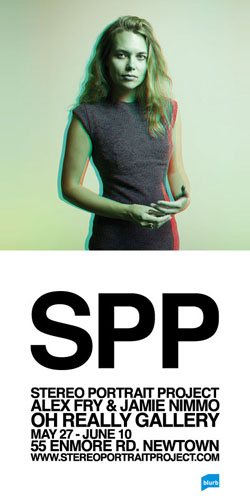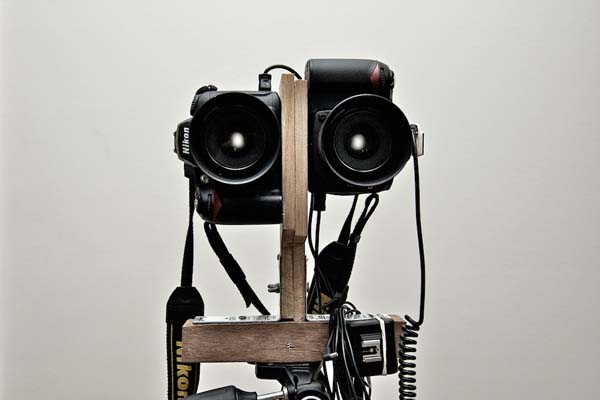 If you’re obsessed by all things 3D at the moment (you know, if you work in Hollywood or a consumer electronics company), you might want to check out the Stereo Portrait Project photography exhibition in Sydney next week.
If you’re obsessed by all things 3D at the moment (you know, if you work in Hollywood or a consumer electronics company), you might want to check out the Stereo Portrait Project photography exhibition in Sydney next week.
Consisting of a series of anaglyph portraits taken by photographers Alex Fry and Jamie Nimmo, the exhibition runs from May 27 to June 10 at the Oh Really gallery in Newtown in Sydney. The portraits themselves require the old school cyan/magenta glasses rather than polarised ones as well, which makes viewing the pictures without glasses kind of neat as well.
But we don’t care so much about that. What we care about is the setup to take the photos, which Nimmo was kind enough to explain to us in an email:
For the Stereo Portrait Project, we used off the shelf hardware and software, from the cameras, lighting, triggering, post production to the printing of the book. We shot using Nikon d90’s with shutter cables connected to an RF trigger. The Lighting system was three nikon sb900’s, one connected via pc sync in a soft box, the other two optically slaved.
A custom camera rig was needed to put the cameras as close together as possible, roughly emulating the distance between the human eyes. There was no quick or cheap solution to do this, so we built a number of prototypes out of wood and brackets. Since we were taking portraits, having the cameras mounted vertically base to base made the most sense, giving us arelatively small interoccular and a vertical frame. We ended up making three versions of the rig, the first to test how the base plates attach to the cameras, a hand held version that wasunwieldy to hold and the final tripod mounted version you see in the pictures.
To synchronize the cameras we used an RF trigger split out to two preload shutter release cables. We tested how fast we could sync both shutters together with the flashes, and got reliable sync up to 1/160 speed. Giving us the ability to have people move around, talk to us and not inhibit their performance. This was very important since hands in front of the body look fantastic in 3d.
The image pairs were then sorted using Aperture before being exported into Nuke, where final tweaks were made before combining them into the final Anagylphic 3D images.
Aperture made sorting and tagging hundreds of very similar left and right images much more managable, while Nuke allowed us to simply adapt many of the same 3d workflows we use in our day jobs as stereoscopic visual effects compositors.
We printed a limited edition run of 25 books for the exhibition using the self publishing website Blurb. The process from layout to finished product was smooth and easy. When we got our books back, they looked exactly as expected. This is a great service that we used to compliment the larger prints that will be on display in the gallery and give the people a chance to take home the entire collection for tabletop stereoscopic enjoyment. The book is now available through their online bookstore here.
Its amazing what a little bit of loungeroom R&D, phone calls and online ordering can do.
The other fantastic aspect of the whole exhibition is that the rig they used to take the photographs looks like a low-tech version of Johnny 5.
